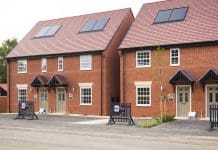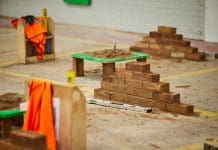With the race to net zero hotting up and building design and management ever more focused on ESG-related issues, BIM and digital twin technology used together can help the industry steal a march on more sustainably designed and operated buildings, explains Devan Mistry, associate director at McBains
Because BIM captures an asset’s whole life cycle process, and Digital Twins are more focused on how the building is used and operated upon completion, used in tandem, the two could help drive huge cost savings in green design and construction.
Commercial and residential buildings account for 50% of global emissions, 40% of global energy demand, 60% of global electricity use, 25% of global water usage and a third of global greenhouse gas (GHG) emissions. So, the ‘double act’ proficiencies of BIM and digital twins have extensive scope – meaning architects, cost managers, project managers, sustainability champions, building operators and dozens of other stakeholders can utilise them to inform more eco-friendly construction projects.
According to a recent report, digital twin technology can help reduce carbon emissions by 50-100% within buildings, as well as reduce operating costs by 35% and boost productivity and efficiency by 20%, making immersive technology fundamental in the fight against climate change. Meanwhile, research from Cap Gemini found that 57% of organizations believe digital twin technology is critical to improving sustainability efforts.
At McBains, we are investigating and merging BIM and Digital Twin technology to help inform several projects. The way we’ve done, it is to formulate a Digital Twin delivery plan, mapped against the RIBA Plan of Work 2020, to drive the information model development through to handover and in-use IoT based on a Computer Aided Facility Management (CAFM) solution. This allows us to create and integrate a programme specific to each project and client in four phases.
The first phase is setting up a stakeholder working group to ascertain the client’s asset and monitoring requirements.
Next, an assessment of existing asset data and systems can be run to gain a better understanding of the end solution and how the BIM model/data can operate within this space.
The third phase is to create a Digital Twin by collaborating with industry-proficient teams which will ultimately lead onto the management of the Digital Twin whilst allowing ongoing maintenance and hosting of data.
How BIM and digital twin technology can lessen the carbon footprints of construction projects
-
Improve building monitoring
Several building operators have leant on IoT technology to cut energy use, such as installing sensors in toilets. Hence, lights go out when they’re not in use or devices to monitor air temperature across a number of their properties. With the information available in one location in the cloud, there is no need to monitor each aspect of a building individually. At McBains, for example, we’re about to pilot a Digital Twin project of our own office in the coming months to create synergies with our ESG and Workplace teams and a holistic cloud-based monitoring environment. This will monitor energy use, lighting, occupancy and humidity.
2. Better reporting
Because digital twins give you a complete picture of how a system operates in real-time, it’s possible to improve sustainability reporting substantially. You can use a digital twin to see reports about waste management, air quality, and other factors contributing to carbon footprint reduction efforts.
3. Simplify construction efforts
Because BIM allows you to track the progress of your construction project from beginning to end, you can make better decisions about materials, configurations, and other construction elements that impact the carbon footprint of a project. For example, concrete and steel account for 10% of the planet’s gas emissions, so builders need to look for more affordable and sustainable options. Within a virtual platform, users can assess different materials that will be best for the project and that will also have the lowest carbon-based impact on the world once created.
Road-test adjustments without the risk
You can use digital twin technology to improve buildings even after completion and minimise the risk continuously. Rather than make permanent changes only to have to fix them later, you can road-test and visualise improvements via the digital twin to see whether they’re feasible and effective.














